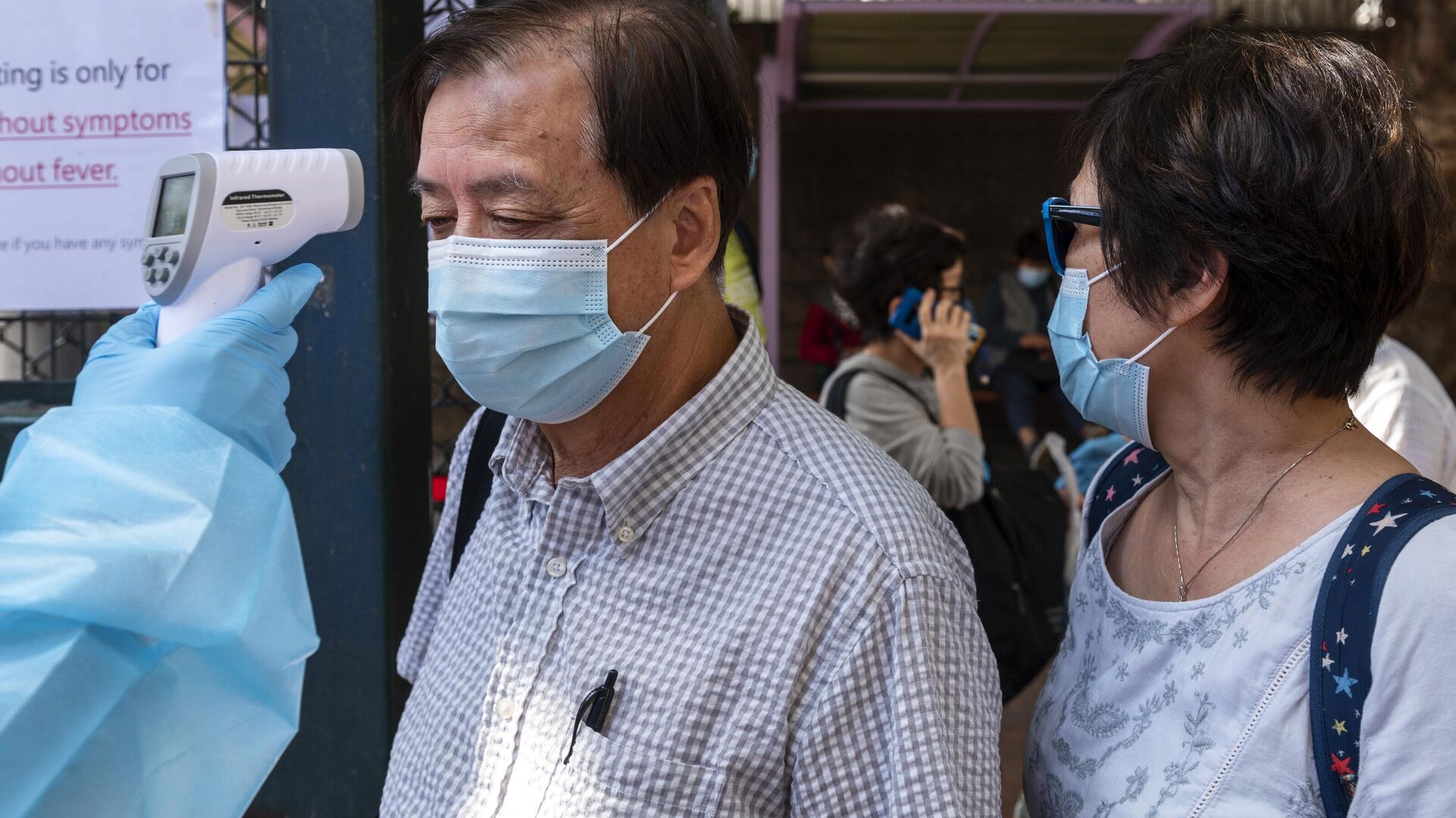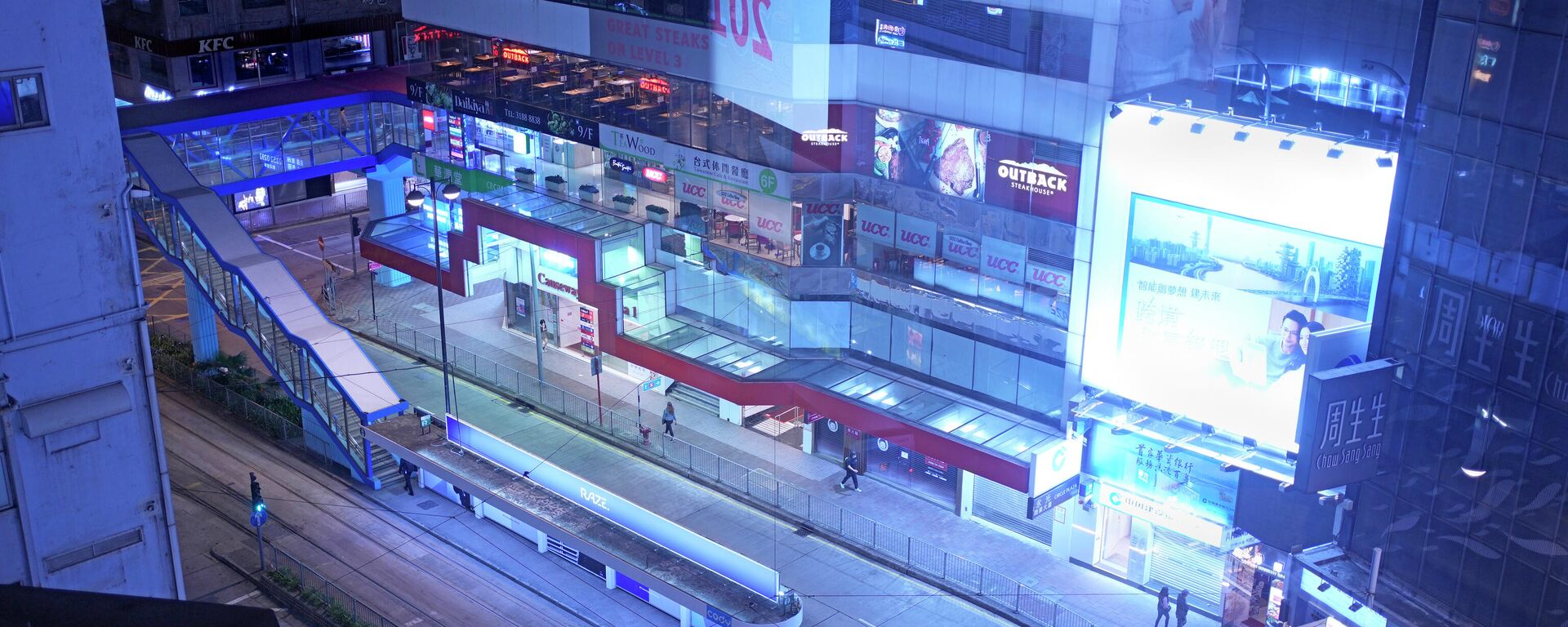https://sputnikglobe.com/20230108/mainland-china-resumes-regular-passenger-traffic-with-hong-kong-1106126855.html
Mainland China Resumes Regular Passenger Traffic With Hong Kong
Mainland China Resumes Regular Passenger Traffic With Hong Kong
Sputnik International
Mainland China and Hong Kong resumed regular passenger traffic on Sunday after three years of COVID-19-related restrictions.
2023-01-08T11:53+0000
2023-01-08T11:53+0000
2023-01-08T11:58+0000
world
china
hong kong
life under covid-19 quarantine
covid-19
https://cdn1.img.sputnikglobe.com/img/07e6/06/0c/1096251444_0:125:3193:1921_1920x0_80_0_0_f150be852378c4b3266af0172b625314.jpg
Most border checkpoints in Hong Kong were closed due to the outbreak of the coronavirus in early 2020. People could enter mainland China only through the city’s airport or checkpoints on the bridges Shenzhen Bay and Hong Kong-Zhuhai-Macau, after which they were obliged to stay in quarantine. The authorities of Hong Kong and mainland China have agreed a daily quota, according to which 50,000 people per day can now cross the border through ground checkpoints in both directions. Besides, there is an additional quota, allowing 10,000 people to travel by plane, ferry or bus through the bridge Hong Kong-Zhuhai-Macau. People coming from Hong Kong are no longer required to take PCR tests on arrival to the mainland, however they still need to get tested 48 hours prior to the border crossing. According to the Hong Kong media, Chief Executive of Hong Kong John Lee on Sunday visited the Lok Ma Chau checkpoint, which covers 70% of the quota. He said that customs clearing on the first day of resumed passenger traffic was going smoothly, adding that the quota of 50,000 seems sufficient. He also underlined that, if necessary, the quota can be revised in consultations with authorities of the provinces of Guangzhou and Shenzhen. As of 11:00 a.m. local time (3:00 GMT), around 9,000 residents of Hong Kong have reportedly crossed the border with mainland China. Hong Kong’s authorities stated that despite the great number of reservations for border crossing, the quota is far from being filled. As of yet, only around 400,000 people have applied to make reservations until March 4. In December last year, China’s government started to gradually ease its zero tolerance anti-COVID-19 restrictions. Among other things, the authorities have introduced the abolition of indiscriminate PCR testing, the ability for asymptomatic citizens or those with mild symptoms to remain in home isolation, lifting restrictions on online and offline purchases of antipyretics. On January 8, obligatory PCR tests and centralized isolation for people arriving to China were canceled. Meanwhile, China is experiencing rapidly surging number of infections. Citizens with mild symptoms are allowed to stay at home, while only patients in critical condition are hospitalized. However, China’s healthcare system seems to be challenged, with hospitals in major cities being overcrowded.
https://sputnikglobe.com/20220318/experts-warn-half-of-hong-kong-may-have-gotten-covid-as-city-passes-1-million-registered-cases-1093995251.html
china
hong kong
Sputnik International
feedback@sputniknews.com
+74956456601
MIA „Rossiya Segodnya“
2023
Sputnik International
feedback@sputniknews.com
+74956456601
MIA „Rossiya Segodnya“
News
en_EN
Sputnik International
feedback@sputniknews.com
+74956456601
MIA „Rossiya Segodnya“
Sputnik International
feedback@sputniknews.com
+74956456601
MIA „Rossiya Segodnya“
zero tolerance anti-covid-19 restrictions, mainland china, hong-kong, pcr tests, covid-19 in china
zero tolerance anti-covid-19 restrictions, mainland china, hong-kong, pcr tests, covid-19 in china
Mainland China Resumes Regular Passenger Traffic With Hong Kong
11:53 GMT 08.01.2023 (Updated: 11:58 GMT 08.01.2023) BEIJING (Sputnik) - Mainland China and Hong Kong resumed regular passenger traffic on Sunday after three years of COVID-19-related restrictions.
Most border checkpoints in Hong Kong were closed due to the
outbreak of the coronavirus in early 2020. People could enter mainland China only through the city’s airport or checkpoints on the bridges Shenzhen Bay and Hong Kong-Zhuhai-Macau, after which they were obliged to stay in quarantine.
The authorities of Hong Kong and
mainland China have agreed a daily quota, according to which 50,000 people per day can now cross the border through ground checkpoints in both directions. Besides, there is an additional quota, allowing 10,000 people to travel by plane, ferry or bus through the bridge Hong Kong-Zhuhai-Macau.
People coming from Hong Kong are no longer required to take PCR tests on arrival to the mainland, however they still need to get tested 48 hours prior to the border crossing.
According to the
Hong Kong media, Chief Executive of Hong Kong John Lee on Sunday visited the Lok Ma Chau checkpoint, which covers 70% of the quota. He said that customs clearing on the first day of resumed passenger traffic was going smoothly, adding that the quota of 50,000 seems sufficient. He also underlined that, if necessary, the quota can be revised in consultations with authorities of the provinces of Guangzhou and Shenzhen.
As of 11:00 a.m. local time (3:00 GMT), around 9,000 residents of Hong Kong have reportedly crossed the border with mainland China.
Hong Kong’s authorities stated that despite the great number of reservations for border crossing, the quota is far from being filled. As of yet, only around 400,000 people have applied to make reservations until March 4.
In December last year, China’s government started to gradually ease its zero tolerance anti-COVID-19 restrictions. Among other things, the authorities have introduced the abolition of indiscriminate PCR testing, the ability for asymptomatic citizens or those with mild symptoms to remain in home isolation, lifting restrictions on online and offline purchases of antipyretics. On January 8, obligatory PCR tests and centralized isolation for people arriving to China were canceled.
Meanwhile, China is experiencing rapidly surging number of infections. Citizens with mild symptoms are allowed to stay at home, while only patients in critical condition are hospitalized. However, China’s healthcare system seems to be challenged, with hospitals in major cities being overcrowded.



